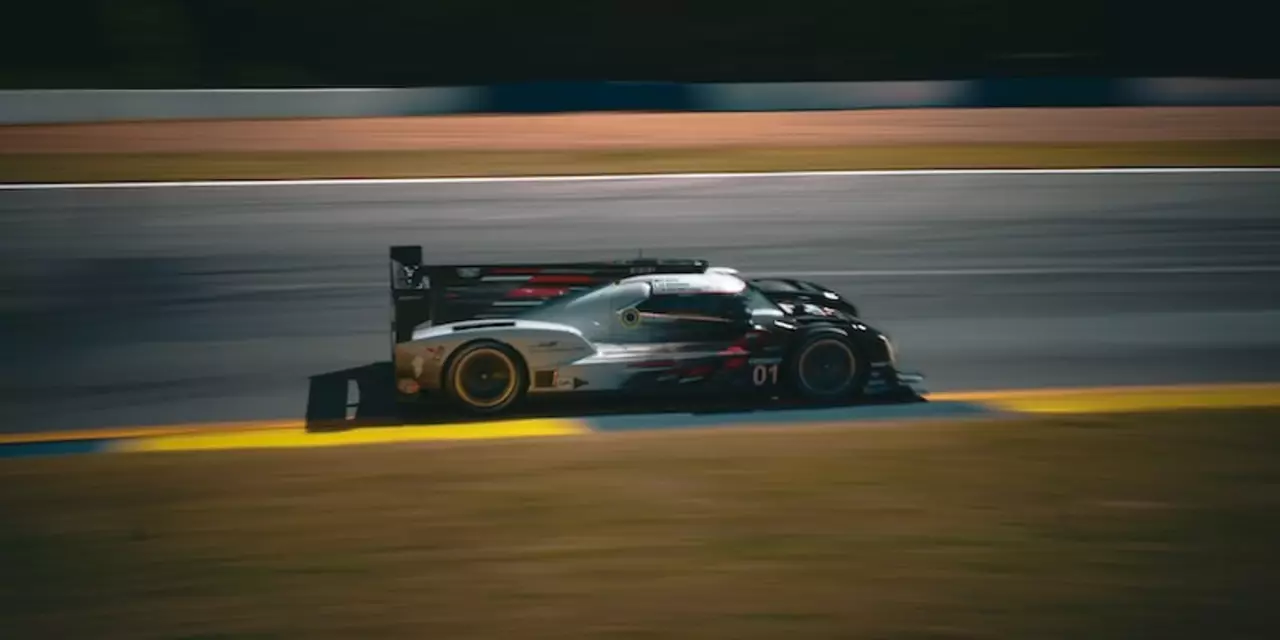Exploring the Speed Differences between IMSA DPi Racing Cars and Formula 1 or Indy Cars
IMSA DPi cars are specifically designed for endurance racing, and are renowned for their speed and performance. However, when compared to Formula 1 or Indy cars, the differences in speed and performance can be stark. In this blog post, we will explore the speed differences between IMSA DPi racing cars and Formula 1 or Indy cars.
IMSA DPi Racing Cars
IMSA DPi cars are designed for endurance racing, and feature a variety of features that make them great for this type of racing. For example, IMSA DPi cars feature an aerodynamic package that reduces drag and increases downforce. This helps to improve the car’s handling and maneuverability. Additionally, IMSA DPi cars are fitted with high-performance engines, allowing them to generate more power and reach higher speeds.
Formula 1 and Indy Cars
Formula 1 and Indy cars are designed for speed, and they feature a number of features that make them much faster than IMSA DPi cars. For example, Formula 1 and Indy cars are fitted with powerful engines that generate more power than IMSA DPi cars. Additionally, the aerodynamic packages on these cars are designed to reduce drag and increase downforce. This helps the cars to reach higher speeds and be more maneuverable.
Speed Differences
It’s clear that there are considerable differences between IMSA DPi cars and Formula 1 or Indy cars when it comes to speed. IMSA DPi cars are designed for endurance racing and are more than capable of reaching high speeds, but they are not as fast as Formula 1 or Indy cars. Formula 1 and Indy cars feature powerful engines and aerodynamic packages that allow them to reach higher speeds and be more maneuverable.
Conclusion
In conclusion, it’s clear that IMSA DPi cars are not as fast as Formula 1 or Indy cars. IMSA DPi cars are designed for endurance racing and feature a variety of features that make them great for this type of racing, but they are not as fast as Formula 1 or Indy cars. Formula 1 and Indy cars feature powerful engines and aerodynamic packages that allow them to reach higher speeds and be more maneuverable.
IMSA DPi racing cars are fast, but how do they compare to Formula 1 and Indy cars when it comes to performance? To answer this, let’s take a look at the differences between IMSA DPi cars and Formula 1 and Indy cars.
IMSA DPi cars have much less horsepower than Formula 1 and Indy cars. They are also heavier, meaning they have less acceleration and slower top speeds. However, the IMSA DPi cars do have a higher cornering speed and are capable of handling the tight turns of a race track.
When it comes to overall speed, a Formula 1 or Indy car will always be faster than an IMSA DPi car. They are designed to reach higher speeds and have more power to reach those speeds. However, IMSA DPi cars are still capable of reaching high speeds and provide a great challenge for drivers.
In the end, it is impossible to say which type of car is faster. Both types of cars have their advantages and disadvantages. IMSA DPi cars may not be as fast as Formula 1 and Indy cars, but they are still powerful and capable of providing an exciting race experience.
When it comes to speed and maneuverability, it is hard to beat Formula 1 and Indy cars. But are they faster than IMSA DPi racing cars? The answer is not so clear-cut as one might think. To truly understand the advantages of IMSA DPi racing cars over F1 and Indy cars, we need to look at the differences between the three.
The biggest difference between IMSA DPi racing cars and F1 and Indy cars is the aerodynamic design. IMSA DPi cars are designed to maximize downforce, which allows them to achieve greater speeds and better cornering. On the other hand, F1 and Indy cars are designed to minimize drag and maximize speed. This means that while they are faster in a straight line, they don’t have the same cornering ability as IMSA DPi cars.
IMSA DPi cars also have more power than F1 and Indy cars. This is due to the fact that they are powered by large V8 engines, which produce more power than the smaller engines found in F1 and Indy cars. This additional power gives IMSA DPi cars an advantage when it comes to acceleration and cornering.
Finally, IMSA DPi cars are much more reliable than F1 and Indy cars. This is due to their simpler design, which means that they are less likely to suffer mechanical failure or breakdowns. Additionally, IMSA DPi cars are designed to run longer races, making them better suited to endurance racing.
So, when it comes to speed and maneuverability, it is hard to beat F1 and Indy cars. However, when it comes to reliability and cornering, IMSA DPi cars have the edge. Ultimately, the choice between the two depends on the type of race and the course layout.
IMSA DPi racing cars are a class of professional prototype sports cars that compete in the IMSA WeatherTech SportsCar Championship. These cars are designed to be extremely fast and powerful, making them a formidable competitor in a variety of races. But how do these cars compare to Formula 1 and Indy cars? In this blog post, we’ll take a closer look at the engineering behind IMSA DPi racing cars to see how they stack up against some of the fastest cars in the world.
At the heart of any IMSA DPi racing car is its engine. IMSA DPi cars are powered by a 5.5-liter V8 engine that produces over 600 horsepower. This impressive engine is mated to a six-speed sequential gearbox, which allows for lightning-fast shifts and maximum power delivery. Additionally, IMSA DPi cars are equipped with a variety of aerodynamic components that help to reduce drag and increase downforce. The combination of powerful engines and aerodynamic components make IMSA DPi cars capable of reaching speeds of over 200 mph.
When compared to Formula 1 and Indy cars, IMSA DPi cars are not quite as fast. However, they are still formidable contenders in the world of racing. IMSA DPi cars are more than capable of keeping pace with their more powerful counterparts and even beating them in certain conditions. The combination of powerful engines, lightweight chassis, and aerodynamic components make IMSA DPi cars a force to be reckoned with.
Ultimately, IMSA DPi racing cars are a formidable competitor in the world of racing. While they may not be quite as fast as Formula 1 or Indy cars, they are still capable of keeping pace and even beating them in certain conditions. With their powerful engines, lightweight chassis, and aerodynamic components, IMSA DPi cars are more than capable of competing with the best of them.
IMSA DPi race cars are incredibly fast and agile vehicles, but how do they compare to the world-renowned Formula 1 and Indy cars? To answer this question, let’s break down the pros and cons of IMSA DPi cars compared to the other two types of racing cars.
Pros of IMSA DPi Cars
- IMSA DPi cars are less expensive than Formula 1 and Indy cars, making them more accessible to the average driver.
- They are much lighter than Formula 1 and Indy cars, making them faster and more agile.
- The cars are designed for endurance racing, so they can go longer distances than other race cars.
- IMSA DPi cars have advanced safety features, such as a reinforced chassis and fire-retardant materials.
Cons of IMSA DPi Cars
- IMSA DPi cars are not as powerful as Formula 1 and Indy cars, so they don’t reach the same top speeds.
- The cars are not designed for the rigors of high-speed racing, so they may not perform as well as other cars in this type of situation.
- The cars are not as customizable as Formula 1 and Indy cars, so they may not be able to meet the individual needs of different drivers.
Overall, IMSA DPi cars are incredibly fast and agile, but they do not quite reach the same speeds as Formula 1 and Indy cars. While they may not be the fastest cars on the track, they are still a great choice for those looking to get into racing without spending a fortune.

